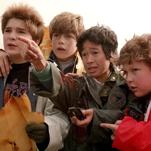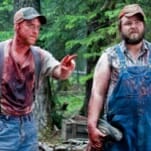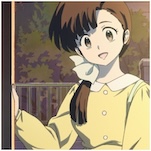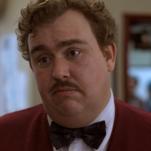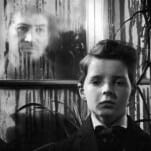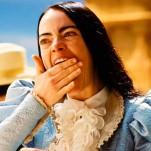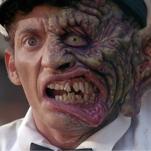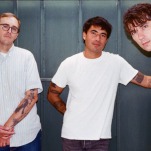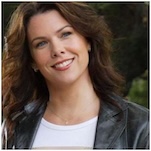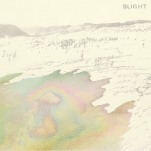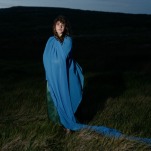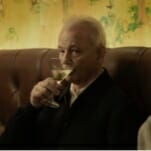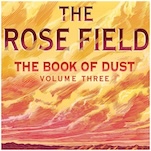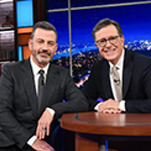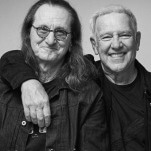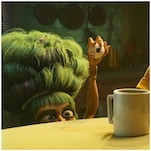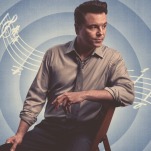The Best Free TV Shows on Pluto TV
Photo Courtesy of NBC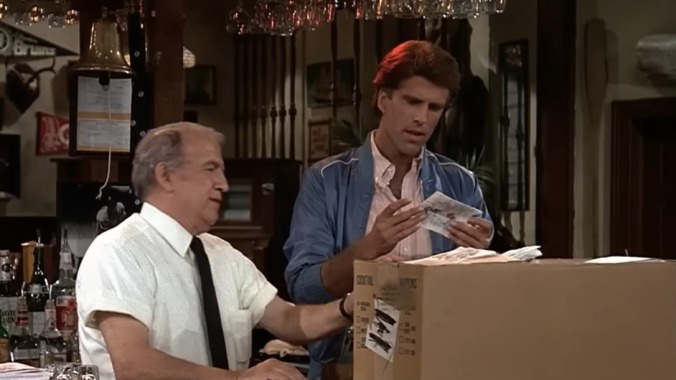
Pluto TV is a FAST (free, ad-supported streaming TV) service from Paramount, and it contains a number of CBS and MTV classics alongside its various offerings. Featuring everything from the Star Trek and Stargate expanded universes to comedies like Sabrina the Teenage Witch and The Jeffersons to fantasy dramas like Charmed and Merlin, there is truly something for everyone streaming on demand on Pluto.
And if the on demand options aren’t enough, Pluto has a wide range of curated channels as well, including the likes of Crime TV (which aggregates numerous crime shows into one channel) and the Star Trek channel (which plays episodes from every Star Trek property available on the platform). There is no account required to stream the below series for totally free, but creating an account will allow your watchlist to be synced across multiple devices. The Pluto TV app is available on iOS, Android, and most smart TV devices. The only downside is that a number of these series aren’t available in completion on Pluto, and the seasons that are available change regularly.
Check out our picks for the best TV to watch on Pluto below, listed in no particular order.
Daria

A perfect distillation of ’90s goodness, Daria holds up as an animated series that both understands and lampoons high school life. The whip-smart and misanthropic Daria Morgandorffer was a heroine for a generation whose favorite refrain was “whatever,” as she navigated the suburban town of Lawndale, the irritation of her uber-popular sister Quinn, and her clueless work-obsessed parents. She couldn’t have done it without the help of her artist friend Jane, though (not to mention her iconic crush on Jane’s rockstar brother), or the help of a jaded, cynical view of this “Sick, Sad World” (as one of the show’s news programs is called). Daria is the poster child for Gen X and early Gen Y culture, and the series remains a delightful time capsule that still holds many truths. —Allison Keene
Cheers

Seinfeld might have recast the sitcom in its image, but Cheers perfected the form, running through 11 seasons without ever running out of charm or laughs. Cheers is rightly lauded as one of the deepest and best sitcom casts ever, but its writing might be unparalleled. Never bound by genre convention, and often willing to experiment with its storytelling rhythms, Cheers never grew old despite rarely leaving the bar for over a decade. Like many long-running sitcoms, the Cheers of the ’90s was really a fundamentally different show than it was in the ’80s, less about the dating life of Ted Danson’s Sam and much more of an ensemble device, full of characters who were by this point beloved by all. The final years of Cheers were when all these characters got to shine, especially Rhea Perlman as Carla and Kelsey Grammer, who joined the cast full-time before spinning off into Frasier. The finale episode received mixed reactions at the time, but nostalgia has pushed it into favorable territory, especially given the happy endings that most characters receive. The fact that Sam decides not to get married and stays with the bar is the right decision—it is of course his “one true love.” —Jim Vorel
Merlin
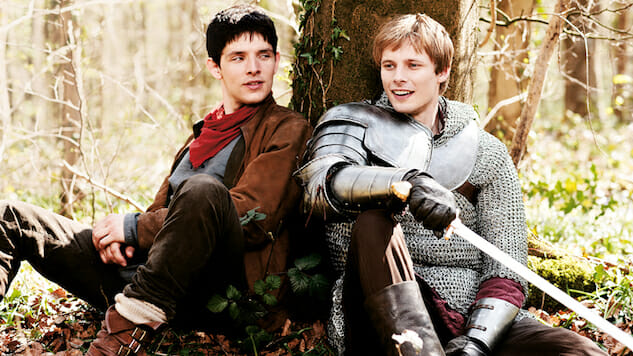
A lot of fantasy is based on existing myths, legends, and folklore, and although you might think you know the story of the famous King Arthur and Merlin, you’ve never seen it told quite like this before. The fan-favorite Merlin, which aired on the BBC from 2008 until 2012, is set in a version of Camelot in which magic has been outlawed. The story begins when Arthur Pendragon (Bradley James) and the wizard known as Merlin (Colin Morgan) are young men who cannot stand each other, but after the latter becomes the former’s personal servant, they put their issues aside and become fast friends. And this is a good thing for both men, since Merlin has to often use his gifts in secret to save Arthur—often without him knowing—so the latter can one day fulfill his destiny as the man who will restore magic to the kingdom. If you’re looking for a lighter fantasy show than some of the others on this list, this is a really good, quite fun option with plenty of bromance. —Kaitlin Thomas
Star Trek: The Original Series

What began as a pitch by writer and producer Gene Roddenberry about a small spaceship exploring the galaxy has since grown into a worldwide cultural phenomenon inspiring millions of viewers (as well as astronauts, scientists and inventors) for more than half a century. A multi-billion dollar franchise spanning eight TV series, 13 films, countless books, comics, magazines and videogames—that all starts here. Four pinging notes ring out in the silence of space. The voice of Captain James T. Kirk (William Shatner) suddenly echoes out among the stars, explaining his crew’s five-year mission via voiceover narration. Their vessel is the Starship Enterprise, which appears in all its glory, orbiting planets and traveling at high warp, faster than anything that 1960s audiences had ever seen, as fast as progress itself. An alien operatic soprano suddenly wails out, then the theme song by composer Alexander Courage, then the titles: STAR TREK. Everything about this new science fiction TV show would break the mold, from its diverse cast and thought-provoking plots to its art direction. At the end of Season Two, when word had spread that Star Trek was at risk of cancellation, NBC received hundreds of thousands of letter in protest from fans, including doctors, professors and even New York Governor Nelson Rockefeller.The Original Series would be canceled in 1969, the last episode airing fewer than two months before Apollo 11’s successful manned mission to the Moon. But its effect was permanent and immeasurable. Roddenberry had built a series that dared to face the unknown, overcome impossible challenges and stretch social conventions for the better. His dream of the future set the stage for a show that would boldly go where no other TV series had gone before. —James Charisma
Sailor Moon
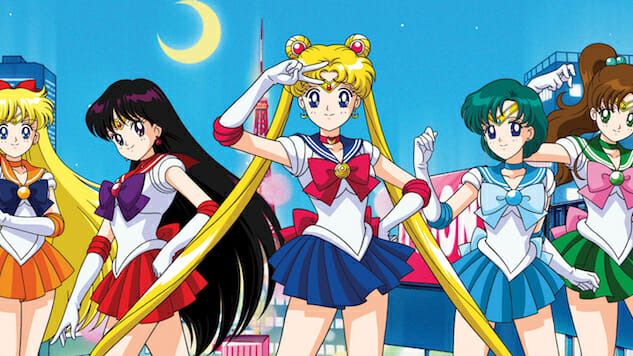
One of those classics that defined at least a few formative years for numerous Millennials, Sailor Moon is one of the rare series on this list that doesn’t hail from either the Marvel or the DC world. The show follows a spacey, boy-obsessed teen named Usagi Tsukino (or Serena, in the English-language adaptations) who just so happens to also be the reincarnated form of the Princess of the Moon Kingdom (Princess Serenity) and who thus has the supernaturally moon-charged power to transform into a magic-wielding superhero named Sailor Moon. The animated series ran for a mind-boggling 200 episodes between 1992 and 1997. That said, Serena/Sailor Moon/Princess Serenity had enough teenage drama to fill all 200 episodes and then some as she was armed with a magical scepter, a pair of talking cats, a tuxedo-wearing mystery man she both loved and hated, and a whole solar system full of similarly powered celestial Sailor Girls (Sailor Mercury stans rise up!). And with recent superhero-adjacent animated hits like Star vs. the Forces of Evil and She-Ra and the Princesses of Power paying homage to both her magical and aesthetic legacy, that’s a flex worth memorializing. —Alexis Gunderson
The Andy Griffith Show
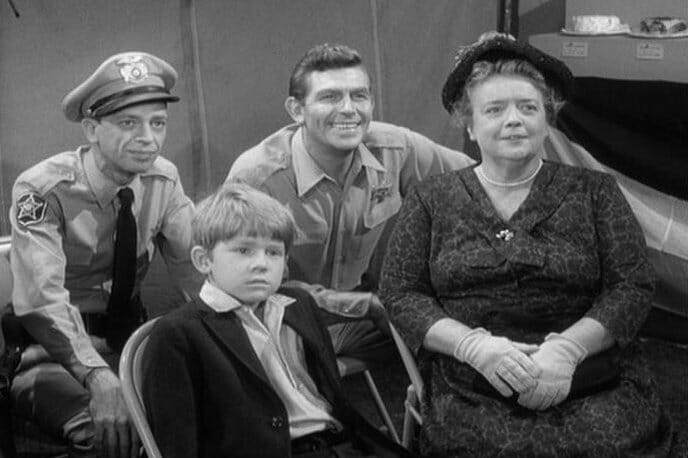
It’s honestly hard to imagine a TV landscape before The Andy Griffith Show. Much like air or water, the show has an almost elemental feel to it, as if it’s always been there. That’s not to say, of course, that it’s easy to ignore. Quite the contrary, out of all the classical sitcoms, Andy Griffith not only boasts a remarkably sharp comedic sensibility that has stood the test of time, but also demonstrates a sense of naturalism that remains notable even to this day. Though shot in and around Los Angeles, the show’s production team expertly crafted Mayberry into a fully realized location that boasted the tangible look and feel of a small, rustic town. Not to mention that the creative team brilliantly populated the area with a memorable group of characters, with Andy serving as the town’s Zen beacon of wisdom forced to spend every week wrangling the crazy town kooks—including Don Knotts’ Deputy Barney Fife, who remains the gold standard for which all subsequent scene-stealing TV goobers have aspired. A beautifully crafted relic of a time and place long gone, The Andy Griffith Show has more than earned its position as a newfound icon of Americana. —Mark Rozeman
Sabrina the Teenage Witch
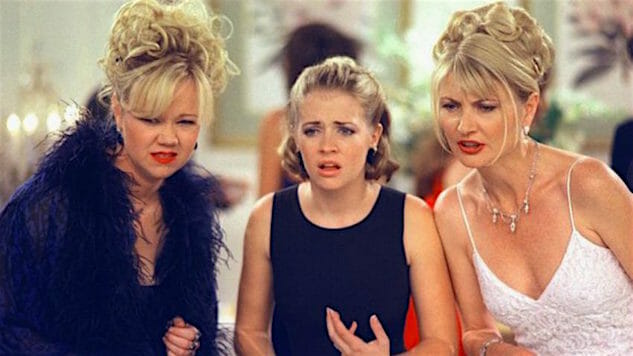
Melissa Joan Hart’s other television show, Clarissa Explains It All, began with her character in junior high. The long-running Sabrina, the Teenage Witch, on the other hand, saw Sabrina (Hart) heading to college in the fifth season. Before that, it was the tale of a young woman dealing with teenage issues, but as a witch. Obviously, there was a bit of metaphor at play here. Sabrina learning how to be a witch and dealing with the issues of being a witch ran parallel to the issues that teenagers face. Hart was a dynamic and entertaining presence, making her a great choice to serve as the center of the show. Sure, the series was silly and frothy. It began life as a TGIF show, after all. But its delightful silliness was the show’s strong suit. However, it must be said that the real highlight of Sabrina was not Sabrina herself, but her cat, Salem (voiced by Nick Bakay). Salem was a supremely, wonderfully goofy presence. Whenever they trotted out the incredibly fake puppets designed to allow Salem to talk and do crazy things, it was usually terribly funny—and not always intentionally. To this day, there’s something so delightful about those moments, as the litany of Salem GIFs online can attest. This is not to say that Hart was upstaged on her own show by a talking cat puppet … but it was close. —Chris Morgan
The Jeffersons
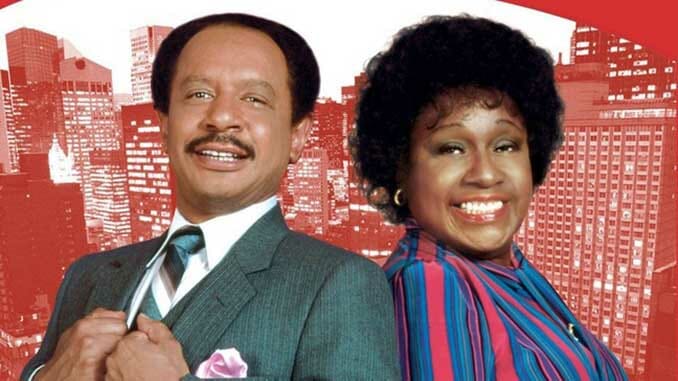
George (Sherman Hemsley) and Louise (Isabel Sanford) Jefferson first appeared as the new neighbors of Archie (Carroll O’Connor) and Edith Bunker (Jean Stapleton) on the Norman Lear-created sitcom All in the Family. George opened a dry cleaners during the show’s first season, and it does so well that the Jeffersons are able to move from a working class neighborhood in Queens to “a deluxe apartment in the sky” in Manhattan. (The theme song really does describe it perfectly.) The Jeffersons picks up after the family’s move, when George has an entire dry cleaning franchise complete with five locations in the city. The series was so successful that it ran for 11 seasons and became the second-longest-running series (by episode count) featuring a primarily Black cast in TV history. —Krystal Drew and Kaitlin Thomas
The Twilight Zone
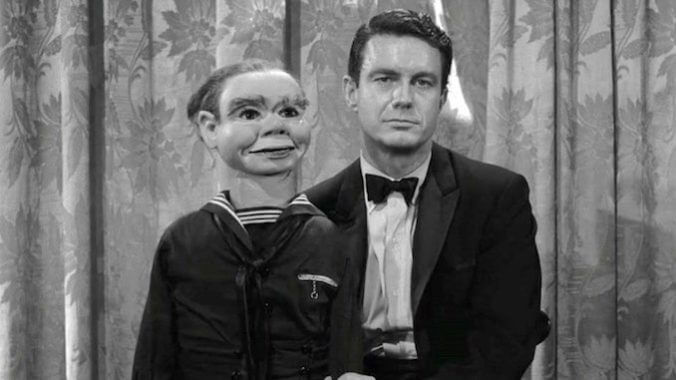
It is, in the estimation of any sane person, one of the greatest science fiction series of all time without a doubt, with its myriad episodes about technology, aliens, space travel, etc. But The Twilight Zone also plumbed the depths of the human psyche, madness and damnation with great regularity, in the same spirit as creator Rod Serling’s later series, Night Gallery. Ultimately, The Twilight Zone is indispensable to both sci-fi and horror. Its moralistic playlets so often have the tone of dark, Grimm Brothers fables for the rocket age of the ‘50s and ‘60s, urban legends that have left an indelible mark on the macabre side of our pop culture consciousness. What else can one call an episode such as “Living Doll,” wherein a confounded, asshole Telly Savalas is threatened, stalked and ultimately killed by his abused daughter’s vindictive doll, Talky Tina? Or “The Invaders,” about a lonely woman in a farmhouse who is menaced by invaders from outer space in an episode almost entirely without dialog? Taken on its own, a piece of television such as “The Invaders” almost shares more in common with “old dark house” horror films or the slashers that would arrive 20 years later than an entry in a sci-fi anthology. —Jim Vorel
Taskmaster
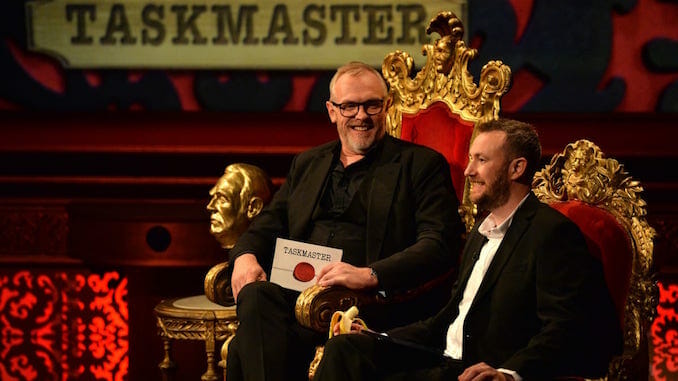
Taskmaster is a competition program that asks its panel of comedic competitors to perform a series of pointless tasks over an extended period of time, all with the knowledge that Davies, as the Taskmaster, will eventually hold them each to account for their various decisions, good and bad. Some tasks are silly (“Make this coconut look like a businessman”), others arcane (“Fill an egg cup with tears”), still others so dead simple, the panelists end up certain there must be a trick. (Which is often true.) And the tasks don’t end once their time in the field is done—for every episode they film in the studio (as few as six in Series 1, as many as ten in later series), the panelists are asked to open by bringing in an item for that week’s prize task (“Best Chair,” “Shiniest Object,” “Boldest Belt”), and end by competing head-to-head in a final live task. —Alexis Gunderson
Charmed
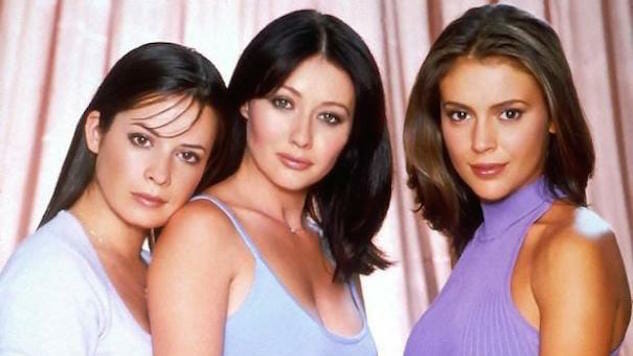
Airing from 1998 to 2006, the story of Piper (Combs), Phoebe (Alyssan Milano), and Prue (Doherty), three sister who discover they are the Charmed Ones and use their Power of Three to battle the forces of evil always had a feminist angle. The Halliwell sisters didn’t need men to fight their battles they used their brains and their witchcraft to fight off demons and all sorts of nefarious sources. And lest we remind you that the drama is one of the longest running ones with all female leads. The series underwent a major cast change when Doherty departed (as she does) at the end of Season Three and Rose McGowan came onboard as long lost half-sister Paige. But McGowan held her own and the series lasted for another five seasons. Premiering almost two decades ago, the show helped define the WB as the place for compelling drama aimed at young women. We were all Charmed, I’m sure. —Amy Amatangelo
Sanford and Son

Although Sanford and Son was developed by Norman Lear and Bud Yorkin as an adaptation of a British sit-com, there’s a bitterness and nihilism to the show that don’t appear in Lear’s other works, let alone other sitcoms from the ‘70s. Much of this comes from the brilliant Redd Foxx, who delivered an iconic performance as the titular Sanford, co-owner of a junk store. Really, though, the show was a two-hander, relying just as much on the underrated Demond Wilson, who played the progressive straight man to Foxx’s childish firebrand with perfect comedic timing. Yes, the laugh track is there, and Foxx’s language is disarmed so as to make it past network censorship, but despite the genre trappings, there was a realism to Sanford and Son that made it like nothing else on television at the time, and very little since.—Sean Gandert
Beverly Hills 90210
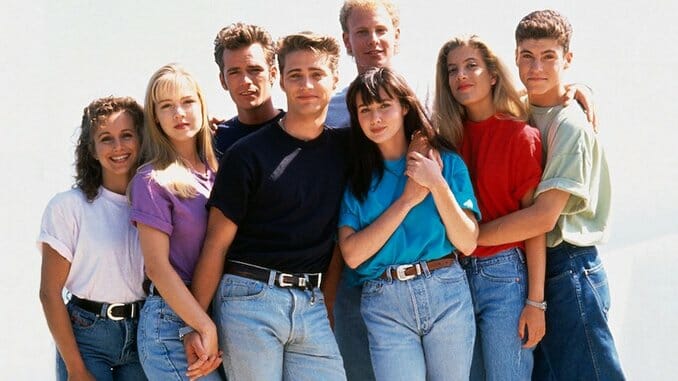
You never forget your first TV love. A picture of Dylan McKay still hangs on my refrigerator. Sigh. Sixteen years after the Peach Pit gang left the airwaves, it’s easy to forget how utterly influential this Aaron Spelling drama was. Now you may remember the sideburns, the catchphrases and the mall stampedes. But 90210 was a pioneer. Without it, we would have no Dawson’s Creek, The O.C., Gossip Girl or countless other teen soaps. Today we take for granted that producers will want to create dramas about high school life. But that wasn’t always the case. Spelling tapped into something—that high school is a soap opera, and everything about it seems larger than life at the time. Who you’ll go to prom with, having sex for the first time, fighting with your best friend—these are all huge deals. The show was couched in the glamour of Beverly Hills, but the series tackled every single issue adolescents face regardless of their backgrounds. Eating disorders, drug use, abusive boyfriends, suicide, pregnancy scares—you name it, Spelling and showrunner Darren Star shied away from nothing, pushing the network executives and censors to new levels. My love for this show is endless. 90210 (and no, I don’t acknowledge the 2008 remake) ended after a decade-long run, but I would have watched those kids right into the Golden Girls years. —Amy Amatangelo
Everybody Hates Chris
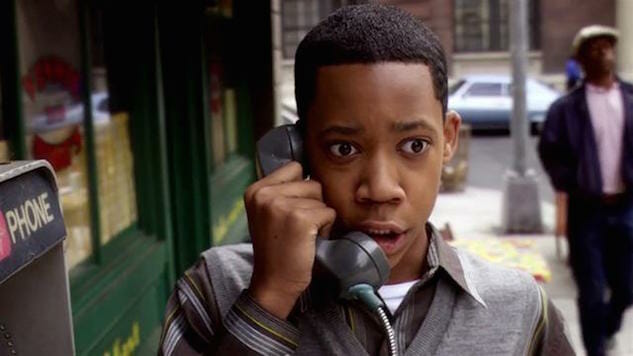
Chris Rock is one of the funniest comedians of all time. This is far from a controversial stance. Upon developing a period sitcom about his Brooklyn childhood for the (now defunct) UPN back in the mid-2000s, however, the question emerged of whether or not his brand of knowing, acerbic comedy could survive the transition to network TV. The answer proved to be both yes and no. From the opening seconds of its pilot, Everybody Hates Chris positions itself as an incisive, utterly confident comedic tour-de-force that is perfectly in line with Rock’s brand. And yet, in the hands of co-creator/showrunner Ali LeRoi, the show aimed to be much more than simply the comedian’s stage work reformatted into TV storylines. The result was a family sitcom that both harkened back to the Norman Lear comedies of old, while still retaining the rapid pace and tight construction of the best single-camera productions. The show was never more successful, however, than when it came to its casting, with Tyler James Williams demonstrating immense charisma and comic timing as a young Chris; meanwhile, Terry Crews and Tichina Arnold would promptly enter the pantheon of great TV couples as Chris’ larger-than-life parental units. And though low ratings and frequent schedule shifts would ultimately snuff Chris out after four seasons, it quickly sketched out its place as one of the greatest sitcoms of the new millennium. —Mark Rozeman
The Fall
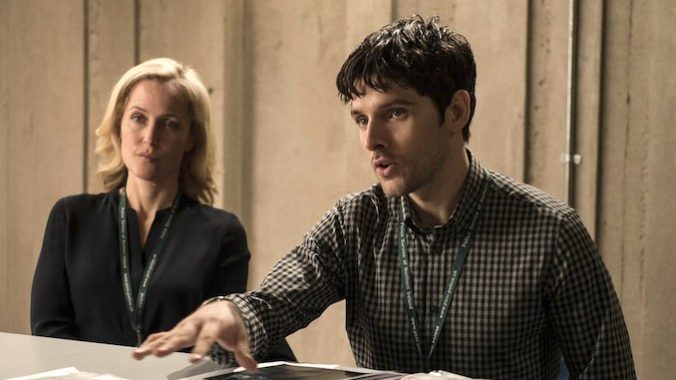
Let it be known that before he was Christian Grey, Jamie Dornan proved his acting chops and charisma as a disturbingly un-disturbable murderer in this superb psychological thriller. Dornan’s mild-mannered husband, father and grief counselor (!) is among the most terrifying onscreen serial killers in recent memory. Paul Spector is a stalker, as exacting and methodical as his eventual pursuer. Enter Gillian Anderson’s Stella Gibson, a British detective superintendent called to Belfast to look into a spate of gruesome murders. As the cat-and-mouse game intensifies, Anderson’s characterization is its own triumph: analytical, uncompromising, reserved, but brazenly sexual on her own terms, entirely unfazed by the politicking and dick-swinging of her male colleagues. That we know the identity of the killer from the show’s first frames, and yet can’t take our eyes off the screen is a testament to the stealth creep with which The Fall operates. —Amanda Schurr
Criminal Minds
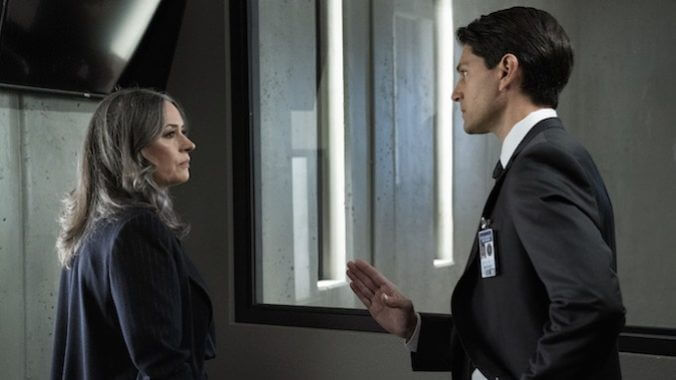
Criminal Minds is the stuff of dreams for those of us interested in a more macabre cop show. Similar to Law & Order: SVU, the series delves into the psychology of its criminals, thanks in large part to Dr. Reid, the show’s quirky, lovable, genius-boy psychologist (played by Matthew Gray Gubler). But there’s also the darker side to these plots, and Criminal Minds—which centers on far more violent crimes than the average cop show—is not one to watch late at night by yourself. —Annie Black
Star Trek: The Next Generation
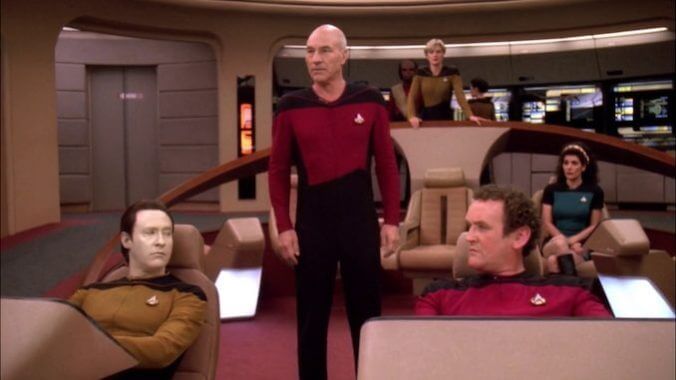
The original series was pioneering. Deep Space Nine and Voyager had their moments. But TNG was head-and-shoulders the greatest Star Trek franchise (And one of the best sci-fi series of all time). Jean Luc Picard. Data. Worf. The holodeck. The Borg. Gene Roddenbury must not have had a cynical bone in his body, and watching his characters explore strange new worlds, seek out new life and new civilizations, and boldly go where no one has gone before, I didn’t either. —Josh Jackson
For all the latest TV news, reviews, lists, and features, follow @Paste_TV.










